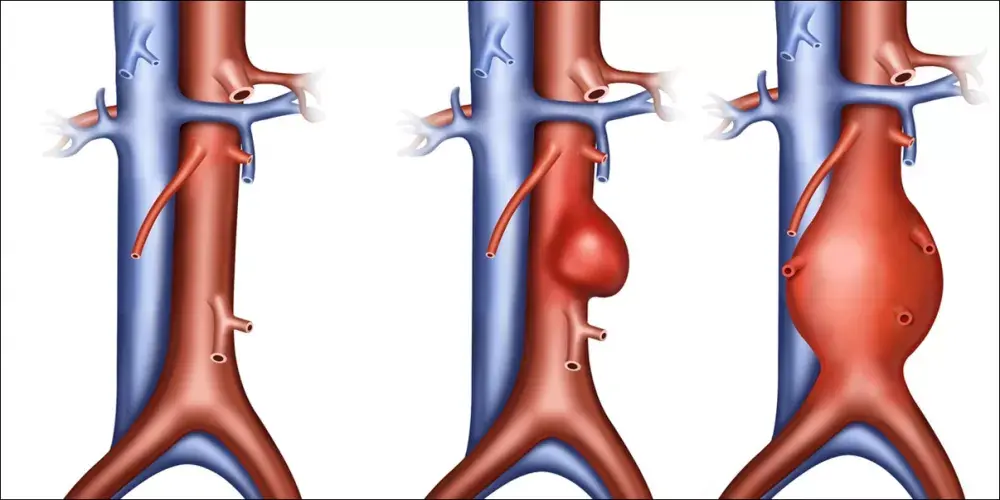
15 Aug Aortic Aneurysm
Aortic Aneurysm, also known as the aorta, is one of the major arteries responsible for transporting blood from the heart to various organs in both the chest and abdominal regions. The aorta is characterized by its thick walls that can withstand the pressure exerted by the nearby heart.
However, the aortic artery can encounter health issues such as an aortic aneurysm. Dr. Amir Malkawi, a vascular surgery consultant, will provide us with an overview of this case in the following article.
Definition of Aortic Aneurysm
An aortic aneurysm, also known as abdominal aortic aneurysm (AAA), is a health problem resulting from weakness in the walls of the aortic artery due to another health issue or some genetic factors. This leads to the formation of a bulge in the artery wall resembling a balloon, where blood can accumulate. Delay in treating this case can lead to the development of serious health complications, including potential rupture of the aortic artery wall in severe cases.
It is worth noting that this case is divided into two main types: thoracic aortic aneurysm and abdominal aortic aneurysm.
Causes of Aortic Aneurysm
The cause of aortic condition is often difficult to determine in most cases, but any health issues that lead to weakened blood vessels can contribute to developing an this case. Factors that also contribute to the development of aortic condition include:
- Smoking: It is a major risk factor for developing aortic case, with smokers having a risk approximately five times higher than non-smokers.
- Atherosclerosis: Resulting from high blood pressure and high cholesterol levels, which significantly weaken blood vessels.
- Chronic diseases: Such as hypertension and diabetes, especially when poorly controlled.
- Certain health problems: That causes inflammation of blood vessels.
- Family history: of aortic aneurysm.
- Direct injury: to the aortic artery.
- Certain infections: such as syphilis.
- Certain genetic disorders: that affect connective tissues in the body, such as Marfan syndrome.
Symptoms
The symptoms of aortic case can vary depending on the location of the aneurysm, and typically do not cause noticeable symptoms unless the aneurysm is large and advanced. Here are the main symptoms:
Symptoms of Thoracic Aortic Aneurysm
These may include:
- Chest pain, usually not related to exertion.
- Hoarseness due to pressure on the nerve that supplies the vocal cords.
- Back pain in the area between the shoulder blades.
- Coughing and shortness of breath due to pressure on the airway.
Symptoms of Abdominal aortic aneurysm
These may be accompanied by the following symptoms:
- Pain in the middle or lower back.
- Feeling a pulsation in the abdomen around the navel area.
- Deep pain or swelling in the abdomen.
Diagnosis of aortic case
this case is diagnosed through abdominal ultrasound imaging, following a clinical examination. Other tests that a doctor may request include:
- Examination of the abdomen and listening to heartbeats.
- Screening for signs of conditions causing aortic case, such as certain genetic disorders.
- Magnetic resonance imaging (MRI).
- Echocardiography to assess the size of the blood vessels.
Treatment of Aortic Condition
The treatment of this case at Dr. Amir Malkawi’s clinic depends on the severity of the condition, as follows:
- For mild cases of aneurysm, the doctor may opt for regular monitoring and prescribe medications that improve blood flow through the artery and strengthen the blood vessel walls.
- In severe cases of aortic condition where there is a high risk of rupture, the doctor may recommend surgical intervention to repair the damaged artery, aiming to prevent rupture and internal bleeding.
Read More: Surgical Bypass for Peripheral Artery Disease
References:
[1] – https://www.nhlbi.nih.gov/health/
[2] – https://www.webmd.com/heart-disease/heart-disease-aortic-
